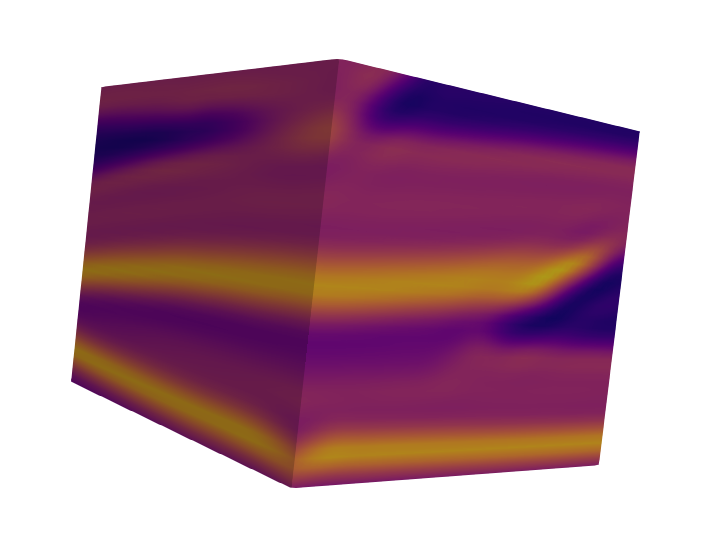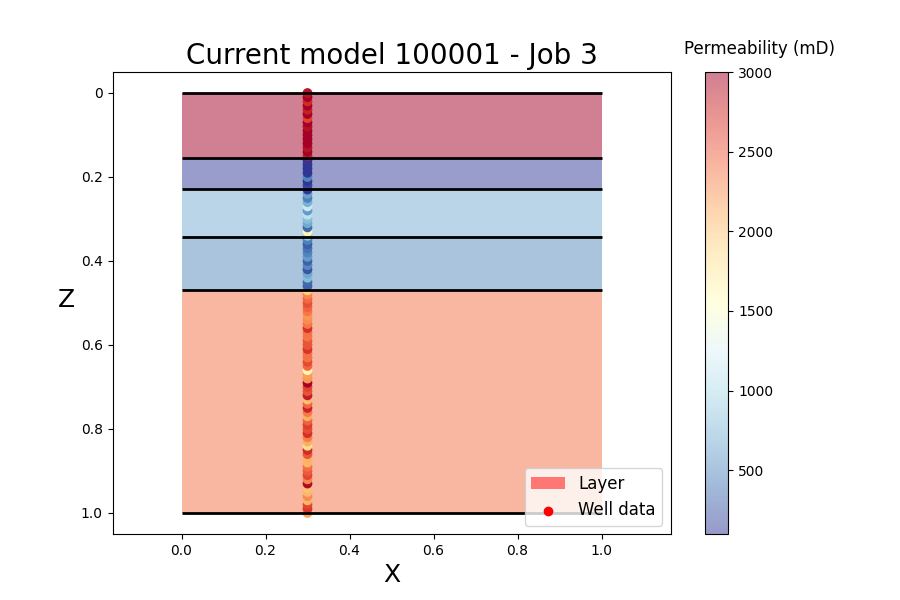
This code computes the smooth equivalent medium of any (meshable) geological model for the elastic wave equation. The upscaling method behind the code is the non-periodic homogenization. This method asks to solve an elastostatic problem, which is achieved using a tetrahedral Finite Element Analysis. The result is then smoothed according to the minimum wavelength to be propagated. The obtained medium usually is anisotropic; it can be used in any wave equation solver handling anisotropic heterogeneous media.
SIGMA (Seismic Imaging for Geomodel Analysis) is a collection of programs to close the loop between seismic imaging/modeling on the one hand, and seismic interpretation and structural modeling on the other hand. The long term goal of the library is to develop tools needed for reducing structural uncertainties by waveform inversion...
OM-MADE is an open-source progam written in Python v3. It is designed to simulate one-dimensional solute transport in multiple exchanging conduits and storage zones.

Transdimensional inversion of flow data (TIFlow) is a library to perform transdimensional inversions in history matching problems. In contrast to Bayesian sequential modelling in which permeability values are inferred in a fixed reservoir geometry, TIFlow allows transdimensional Monte Carlo methods based on a reversible jump Markov chain Monte Carlo algorithm (RJMCMC). These approaches are a way to solve the inverse problem with a self-adaptive geological parameterization in which the number of model parameters is unknown.
The code considers a 2D layered reservoir model. The number of geological layers is variable and the algorithm will converge towards the appropriate reservoir parameter (permeability property) and reservoir geometry (number and location of layer interfaces), using flow data and static reservoir data.

SmoothQuad is a library for 2D meshing and optimization of homogenized medium for seismic simulations. implements mesh optimization algorithm with a modified cotangent Laplacian algorithm in order to bring each node in a position in which the wave simulation would perform better (maximizing the Δx/Δt in each element). The mesh is returned in msh 2.2 format and the code provides some methods to integrate it and the homogenized model into the SpecFem2D simulator.
This library is primarily being developed by Marius Rapenne in C++/Python/Fortran in the frame of his PhD thesis on Adaptive Homogenization for Seismic Risk Estimation.
The code is avalable on Github for sponsors here.
![Model courtesy of Harvard-Chevron [Muron, 2005] 3D Restoration of Harvard/Chevron Model [Muron, 2005]](/images/personal_media/chauvin/harvard_restoration.gif)
RestorationLab is a research plugin which aims at removing deformations undergone by rocks to get the paleo-geometry of a geological model. It is a great tool able to perform 3D restoration on both implicit and explicit geological models.
Concretely it unfolds and removes the displacement due to the faults. It solves mechanics-based problem using finite element element and Dirichlet/Neumann boundary conditions. This plugin can also decompact a model after removal of a layer using classical porosity laws. Since Gocad 14 this plugin uses RINGMecha, therefore restoration can be applied independently to Gocad by command lines.
Contact : Benjamin Chauvin.
